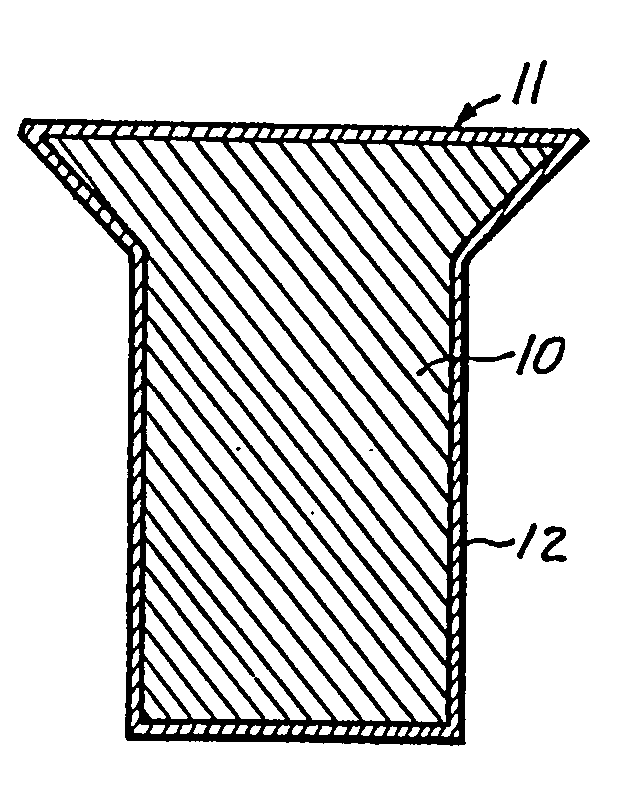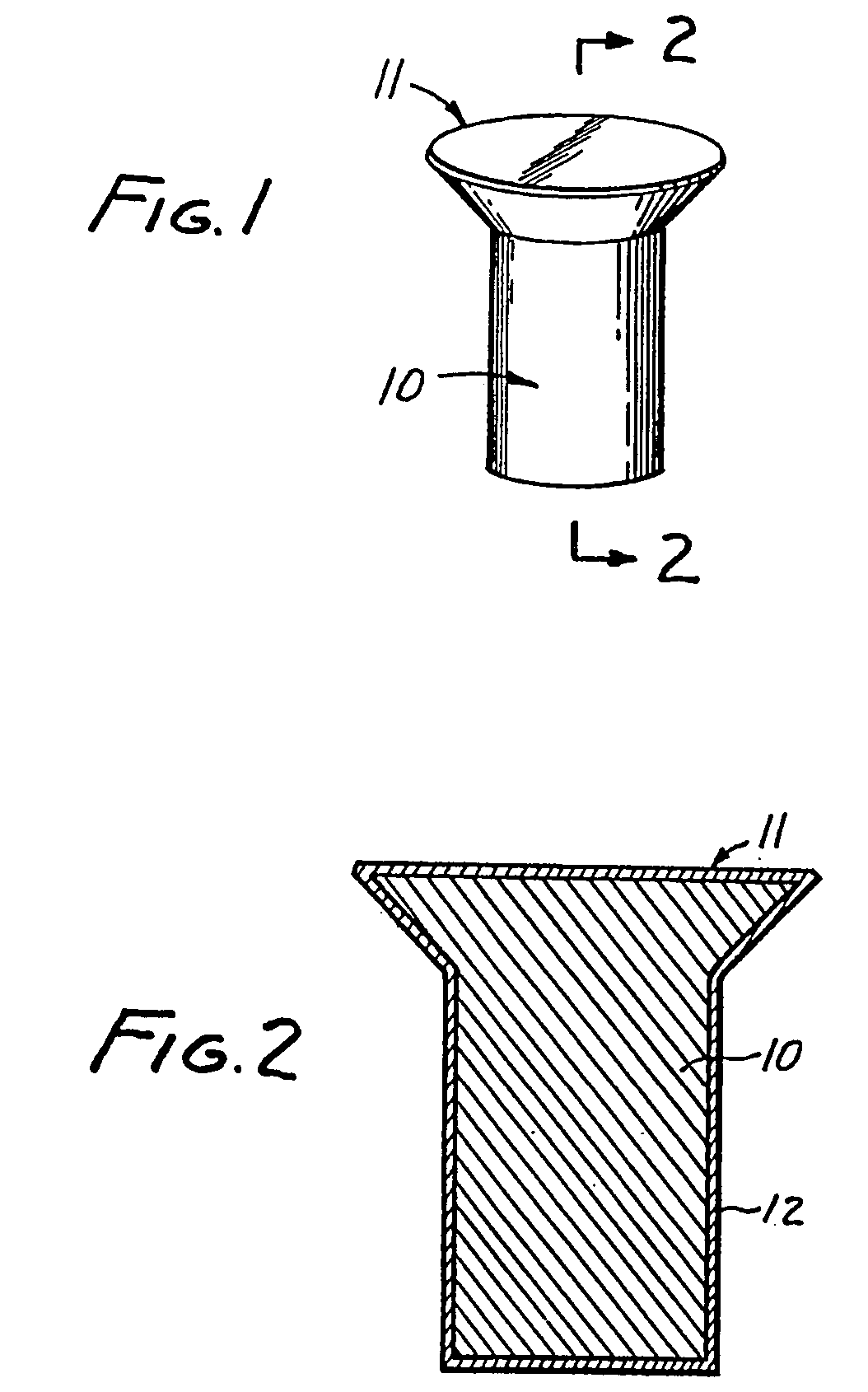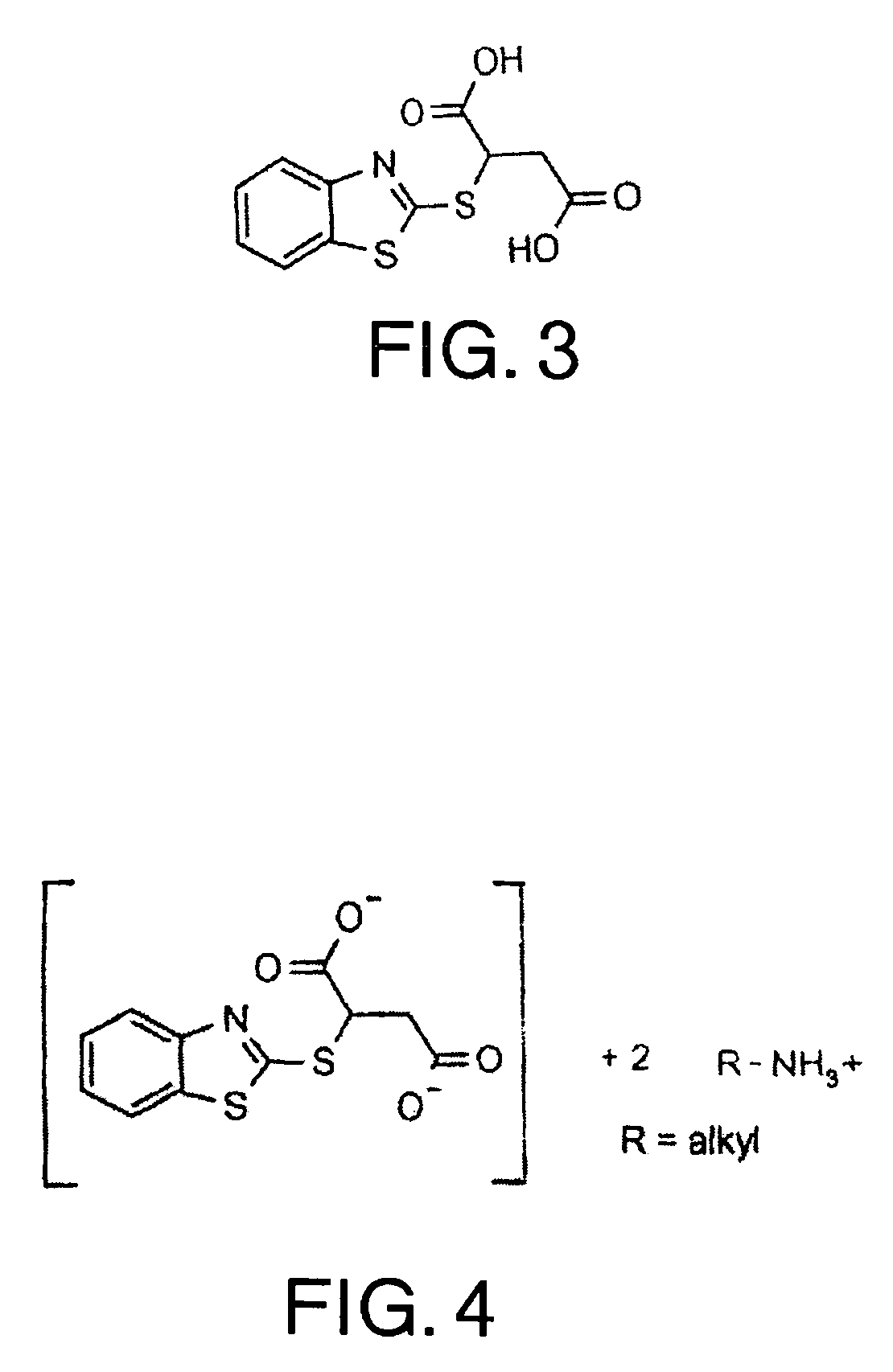Chromate free corrosion resistant coating
a corrosion resistant coating and chromate technology, applied in the direction of threaded fasteners, bolts, other chemical processes, etc., can solve the problems of increased corrosion susceptibility of these structures, aluminum or titanium elements are not desirable to be corroded, and aluminum has a tendency to galvanically induced corrosive attack in contact with titanium, so as to prevent corrosion
- Summary
- Abstract
- Description
- Claims
- Application Information
AI Technical Summary
Benefits of technology
Problems solved by technology
Method used
Image
Examples
examples
[0028]Various corrosion resistant coatings were formulated with a basic carrier formulation of a phenolic resin, used in a solution of ethyl alcohol, and rendered less brittle by addition of polyvinyl butyral and di-octyl phthalate (DOP), to which the different corrosion inhibitors and pigments were added. Various other additives were used, such as polytetrafluoroethylene to serve as a lubricant, and powdered aluminum to serve as a pigment. The corrosion resistant coatings were used to coat titanium fasteners, which were inserted in an aluminum block to form an assembly. Each assembly was subjected to alternate immersion cycles in a 3.5% sodium chloride aqueous solution for 1,000 hours. Each cycle consisted of immersing the assembly in the sodium chloride salt solution for 10 minutes, removing the assembly, and subjecting the assembly to forced air drying for 50 minutes. The testing was run at an ambient temperature of 75° Fahrenheit. The results of the alternate immersion screening...
PUM
| Property | Measurement | Unit |
|---|---|---|
| particle size | aaaaa | aaaaa |
| thicknesses | aaaaa | aaaaa |
| thickness | aaaaa | aaaaa |
Abstract
Description
Claims
Application Information
 Login to View More
Login to View More - R&D
- Intellectual Property
- Life Sciences
- Materials
- Tech Scout
- Unparalleled Data Quality
- Higher Quality Content
- 60% Fewer Hallucinations
Browse by: Latest US Patents, China's latest patents, Technical Efficacy Thesaurus, Application Domain, Technology Topic, Popular Technical Reports.
© 2025 PatSnap. All rights reserved.Legal|Privacy policy|Modern Slavery Act Transparency Statement|Sitemap|About US| Contact US: help@patsnap.com



